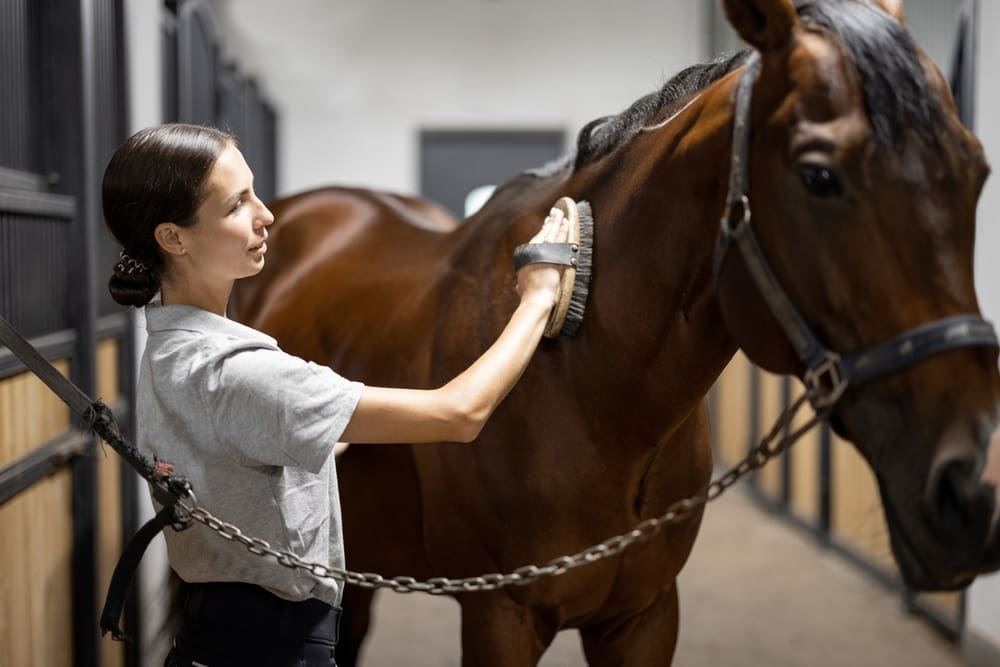Owning a horse with someone else can be a wonderful experience, but without a clear, written agreement, even the best partnerships can sour. Horses are a big commitment, and it’s common for co-owners to start with the same vision, only to find differences emerge over time about how the horse is cared for, trained or sold.
At Tees, our equine solicitors help you put the right foundations in place from the outset. We draft co-ownership agreements that are tailored to your circumstances, giving you clarity on responsibilities, protecting your investment, and helping you avoid disputes later on.
Why co-ownership agreements matter
A horse co-ownership agreement sets out exactly how your arrangement will work. It’s not just about legal formality; it’s a practical tool to help keep everyone on the same page. Without one, misunderstandings can quickly escalate.
We’ve seen disputes arise over things as basic as who owns what share, or who gets the final say on competition entries. In many cases, these could have been avoided if the expectations were written down and agreed in advance.
What your agreement should cover
Every agreement will be different, but here are some of the key areas we recommend including:
Ownership shares: Set out clearly the percentage of the horse each person owns. This avoids future arguments, especially if one person is also training the horse or providing stabling. Without a written record, assumptions can differ and disputes can be costly.
Day-to-day care and training: Decide who will make decisions about feeding, exercise, training and turnout. In arrangements where one co-owner is a professional rider or trainer, it often makes sense for them to take the lead on care, subject to agreed safeguards.
Veterinary treatment: Agree how vet treatment will be authorised. Many co-owners want to be consulted on significant decisions, particularly for competition horses, where health can affect performance and value. Your agreement should also give someone authority to act in emergencies without delay.
Where the horse is kept: Specify the location and type of livery. Decide whether all owners must consent before moving the horse. If one co-owner is also the trainer, the horse is often kept at their yard, but visiting rights for the other owners should be agreed.
Costs and expenses: Set out how costs – livery, farrier, feed, insurance, vet bills will be shared. Sometimes they’re split according to ownership shares; sometimes one party covers them all. Whatever you agree, make it binding in writing to avoid problems later.
Passport custody: The horse’s passport must travel with it. Your agreement should say who holds it and make them responsible for keeping it safe and up to date.
Riding and competition: Decide who can ride or train the horse, and whether others are prohibited from doing so. This is especially important for competition horses. You can also agree a competition plan with flexibility to change it in the horse’s best interests.
Prize money and awards: Agree how winnings will be split and who will receive and distribute the funds.
Selling shares or the whole horse: Include rules about when and how shares can be sold. Many co-owners want the right to buy out a partner before a share is sold to a new owner. Your agreement can also include ‘drag along’ and ‘tag along’ rights to make sure everyone benefits from a sale.
Breeding rights: If the horse may be used for breeding, decide how costs and profits will be shared, and who will own any foals.
Insurance: Specify who will insure the horse and for what, including third-party liability cover.
Resolving deadlock: Include a process for settling disagreements, whether that’s a nominated decision-maker, arbitration, or another agreed method.
Protecting your investment and your relationship
An equine co-ownership agreement is about more than preventing legal disputes, it’s about protecting the relationship between co-owners and the wellbeing of the horse. By agreeing the practicalities early, you can focus on enjoying ownership rather than worrying about what happens if things go wrong.
We often work with clients who only come to us once a disagreement has escalated. At that stage, positions are more entrenched and solutions harder to reach. It’s far better to get advice before you buy or as soon as you enter a co-ownership arrangement.
Why choose Tees for your equine law needs?
We’re not just legal experts; we understand the equestrian world. Our equine solicitors have worked with owners, riders, breeders, trainers and yards across the country. We know the realities of ownership, the pressures of competition, and the potential pitfalls.
When you work with us, you’ll get:
• Specialist equine law advice – from people who know the industry inside out
• Clear, practical guidance – no jargon, just straightforward solutions
• Responsive service – we act quickly to protect your interests and keep things moving
• Tailored agreements – drafted to reflect your specific circumstances and goals
Taking the next step
If you’re thinking about co-owning a horse or already do, now is the time to make sure your agreement is in place. We’ll work with you to cover all the important areas, so you can move forward with clarity and confidence. Contact our equine law team today. We can help you put the proper protections in place and keep your co-ownership arrangement running smoothly for years to come.


